With warm weather comes the desire to eat fresh, flavorful dishes that energize and invigorate (rather than heavy meals that exacerbate the heat). Seafood feels like an ideal protein candidate for this style of dining, especially when you skip the oven or the pan and instead go for a raw approach. Uncooked fish preparations singing with citrus and bolstered by spices and seasonal produce can be easily achieved in a home kitchen, and we especially recommend these five recipes that diverge from super-common raw dishes and deliver both bright flavors and a refreshing eating experience.
Related Reading
White Fish Aguachile
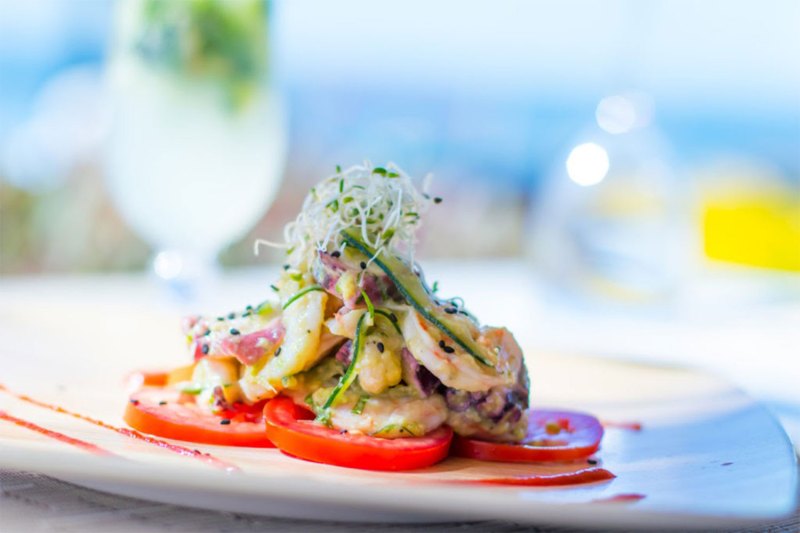
(By José Alberto Méndez, executive chef, Frida at Grand Velas Riviera Nayarit, Mexico)
A dish originating in the Sinaloa region of Mexico, aguachile consists of raw seafood submerged in a liquid marinade with water, citrus juice, peppers, herbs, and spices, then served with raw vegetables. The dish traditionally uses shrimp as its protein, but chef José Alberto Méndez prefers to make his aguachile with white fish, which allows the acidity of the lemon juice and the aromatic herbs in the marinade to really shine through.
Ingredients:
- 9 oz white fish (like tilapia, grouper, cod, catfish, bass, etc.)
- 10 oz lemon juice
- 3.5 oz chopped onion
- 1 oz chopped green olives
- 2 oz chopped green tomato
- 1 oz basil, minced or torn
- 1 oz coriander/cilantro, minced or torn
- 1 oz parsley, minced or torn
- 3.5 oz sliced avocado
- 2.5 oz sliced cucumber
- 2.5 oz sliced jicama
- 1 oz cherry tomatoes
- Salt and pepper, to taste
Method:
- Cut the fish into large cubes and place in a container with the juice of 1 lemon and salt, and black pepper to taste. Let marinate for 5 minutes, then drain the lemon juice.
- Add the rest of the lemon juice, onion, green olive, green tomato, basil, coriander, parsley, and salt and pepper (to taste) to the bowl of a food processor or blender and blend until a smooth mixture is obtained.
- Add the mixture to the marinated fish cubes and stir to combine. Allow to chill for 15 minutes.
- Serve with avocado, cucumber, jicama and cherry tomato.
Bahamian Conch Salad
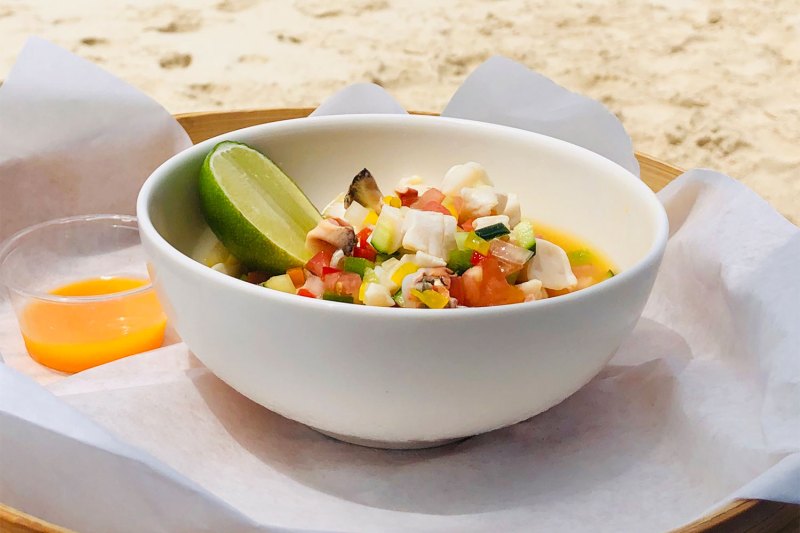
(By Shaniqua Darling, chef de cuisine, The Ocean Club at the Four Seasons Resort, Bahamas)
Conch, a sea snail that’s a staple of many Caribbean cuisines, truly tastes “of the sea,” thanks to its natural brininess and its flavor similarities to scallop and crab. Chef Shaniqua Darling loves to use conch as the protein element of her version of Bahamian Salad, a “light and flavorful [raw] dish [that] is found throughout all islands and cays of The Bahamas.”
Ingredients:
- 2 cups chopped queen conch (if you can’t find conch, Darling recommends shrimp or white fish)
- 1 chopped cucumber
- 1 chopped green bell pepper
- .5 chopped white onion
- 1 cup lime juice
- 1 cup orange juice
- Salt and chili powder, to taste
Method:
- Chop all solid ingredients and add to a large bowl with liquid ingredients (if you’re using frozen conch, allow to thaw before chopping). Stir to combine.
- Add salt and chili powder to taste. Begin slowly, but add more if necessary.
- Allow to marinate at room temperature for approximately 5 minutes. If you’re using shrimp or white fish instead of conch, increase the marination time to 12 minutes. Serve immediately.
Ahi Bruschetta
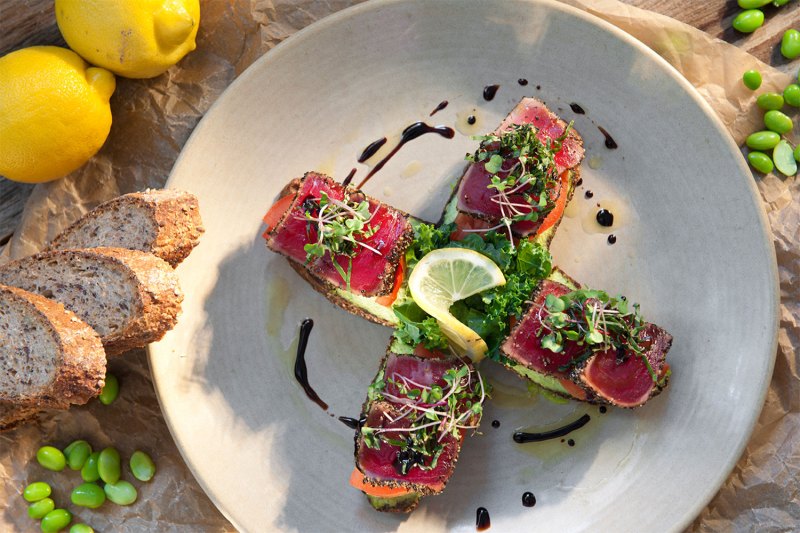
(By Mark Ellman, executive chef/owner, Honu Maui, Hawaii)
A style of tuna essential to the cuisine of Hawaii, ahi refers to either yellowfin tuna or bigeye tuna. Ahi tuna can certainly be served completely raw (and it’s a popular fish choice for crudo, poke, and sushi), but Chef Mark Ellman makes his in-house “bruschetta” at Honu with ahi tuna tataki. He says the following of this Japanese technique popularly used in Hawaiian cooking: “Although not 100% raw, it is definitely mostly raw. The ahi is seared on the outside edges for just five seconds a side. This is known as ‘tataki.’ Japanese fishermen would filet the fish and then ‘tataki’ it to preserve it. It’s like a natural Saran Wrap.”
Ingredients:
- 1 12 oz block of sashimi-grade ahi tuna
- .5 tsp sea salt
- Toasted sesame oil, to taste
- 2 tomato slices, 1/4-inch thick and sliced in half (Ellman recommends using one red tomato and one yellow tomato)
- 2 slices dense, whole-grain bread, 1/4-inch thick and brushed with clarified butter
- 2 tbsp edamame puree*
- 2 tbsp julienned basil
- 1 tbsp extra virgin olive oil
- 1 tbsp aged balsamic vinegar (Ellman recommends Villa Mondori)
- 1 tbsp micro greens
- Salt and black pepper, to taste
Method:
- Brush the ahi block with toasted sesame oil and roll in coarsely ground black pepper until it’s coated on all sides.
- Heat a non-stick skillet to medium-high and brush the pan with olive oil. When the pan is hot, add the ahi block and cook on each side for 5 seconds. Remove from pan and allow to cool.
- Slice the cooled ahi block into 8 pieces (2 x 1 x 1/4 inches each). Sprinkle the pieces with sea salt.
- Season the tomato slices with salt and pepper to taste.
- Grill the bread and cut each slice in half.
- Spread the edamame paste on each piece of bread, then add one half-slice of tomato and 2 pieces of ahi. Top with basil, micro greens, and a drizzle of olive oil and balsamic vinegar.
*Edamame Puree:
- Put 1 cup of defrosted frozen edamame, .5 cup extra virgin olive oil, .5 cup water, .25 cup rice vinegar, and 1 tbsp kosher salt in a food processor and puree until smooth (about 2 minutes)
- Put the puree in the refrigerator to chill before assembling the bruschetta.
Puntacana Ceviche
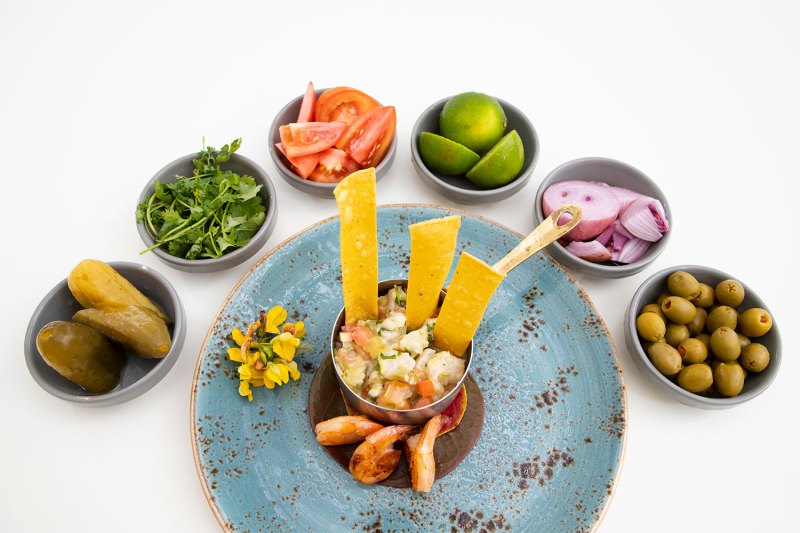
(By Santiago Salamanca, executive chef, Puntacana Resort & Club, Dominican Republic)
Aguachile and ceviche have a great deal in common, but the biggest distinction between the two involves the amount of marinating time used for each dish. When making aguachile, you briefly marinate the fish in liquid (for approximately 5 minutes), while ceviche requires at least a 15-minute period of soaking the seafood in citrus juice. Chef Santiago Salamanca includes a raw grouper ceviche garnished with grilled prawns on his menu that’s easy to replicate at home: “One of the signature dishes available at Puntacana Resort & Club, this recipe utilizes fresh seafood and vegetables and only takes 40 minutes to prep and cook.”
Ingredients:
- 16 oz fresh skinless grouper
- 2 medium prawns
- 4 oz fresh lime juice
- 2 oz red onion, chopped into small cubes
- 2 oz stuffed green olives
- 2 oz diced tomatoes
- 1 oz fresh cilantro
- 2 oz diced gherkins (optional)
- Extra virgin olive oil, to taste
- Salt and pepper, to taste
- Tortilla chips, to serve
Method:
- Dice the grouper into .5-inch pieces.
- Put the diced grouper into a large bowl with lime juice and marinate for 30 minutes.
- While marinating the grouper, add the onions, tomatoes, diced green olives, and gherkins (if using) to a medium bowl and stir to combine.
- Use a strainer to drain the fish and return to the large bowl. Pour the contents of the medium bowl into the large bowl and salt, pepper, olive oil, cilantro, and extra lime juice to taste. Stir to combine.
- Clean the prawns and apply salt. Cook for 3 minutes on the grill.
- Garnish your ceviche with prawns and serve with tortilla chips.
Loquat Crudo
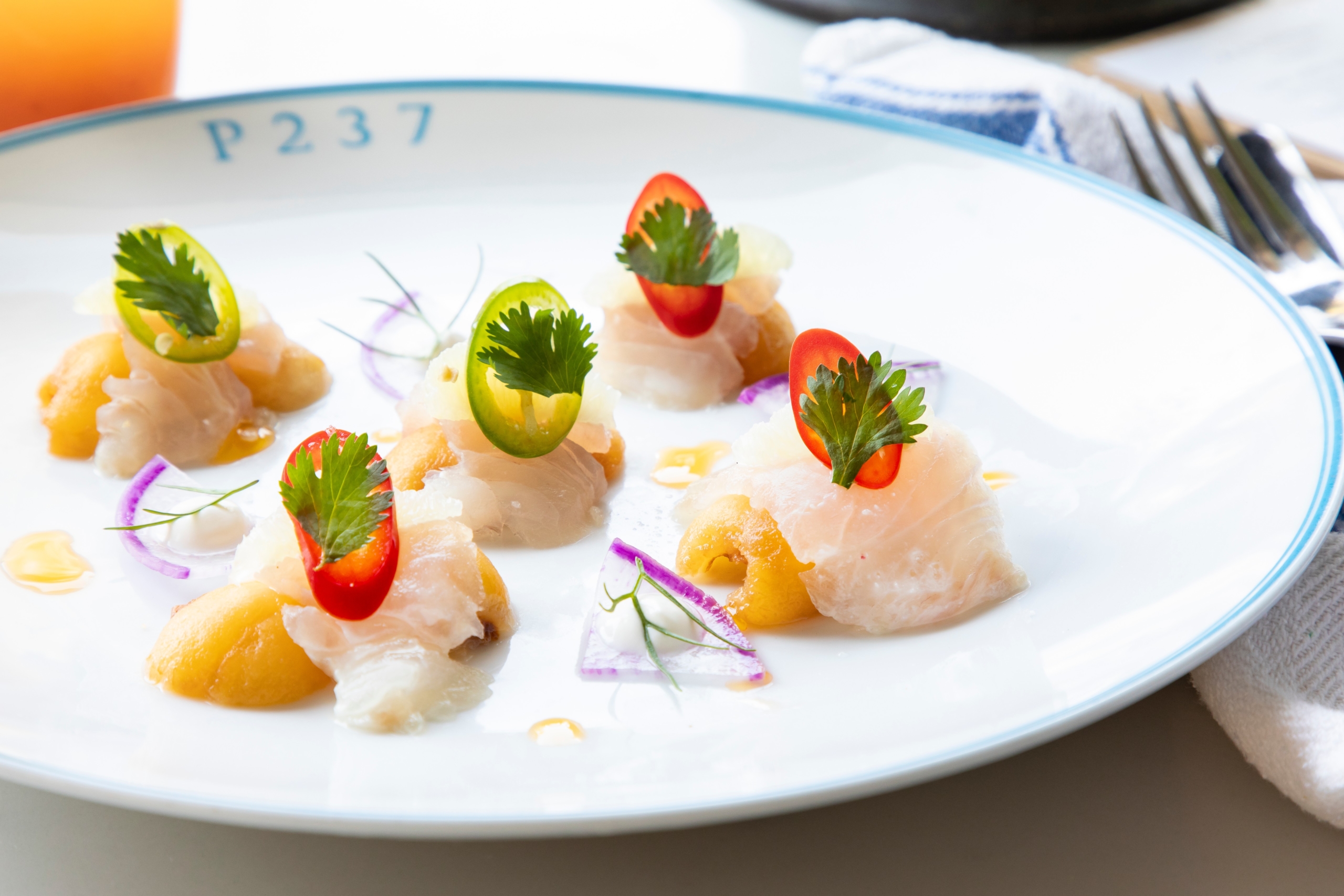
(By Jeff Williams, executive chef, Purlieu, Charleston, South Carolina)
Raw fish provides an ideal canvas for seasonal summer flavors, and chefs appreciate the opportunity to play around with local produce when devising these plates. For Chef Jeff Williams, the loquat, a citrus-esque fruit found throughout the southern United States, serves a crucial purpose in Purlieu’s crudo recipe. “The inspiration behind the dish was really just the bounty of loquats here in Charleston. They’re in Purlieu’s neighborhood and my neighborhood at my home — they’re everywhere. Loquats have a beautiful sour-sweet flavor and a great texture that goes very well with fish; there’s a lot of acidity, and it just works. During this time, we also had an abundance of the best, most beautiful beeliner [snapper], so it was really just a marriage of Lowcountry ingredients that worked out perfectly,” Williams says of this dish.
Ingredients:
- 3 ripe loquats
- 1 Serrano pepper, thinly sliced
- 1 lime
- 2.5 oz beeliner or vermilion snapper, skinless and deboned
- 1 tbsp extra virgin olive oil or chili oil
- 1 oz creme fraiche
- 6 cilantro leaves
- Fleur de sel, to taste
Method:
- Slice fish into 6 portions and put in refrigerator to chill.
- Peel the lime, removing all pith. Cut lime in half, then cut one half into 6 wedges or supremes. Use the other half to squeeze on the loquats.
- Right before serving, peel the loquats, cut in half, and remove the seeds. Slow the oxidation process by squeezing a little lime juice on the loquats. Place loquats cut side down on a plate and top with sliced fish.
- Toss lime wedges, cilantro and Serrano slices in olive/chili oil. Top each piece of fish with lime, cilantro and Serrano. Finish with creme fraiche. Serves 3-6.



